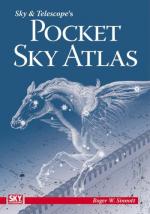|
This section contains 2,939 words (approx. 10 pages at 300 words per page) |

|
The astonishing success of the Hubble, Chandra, and HETE telescopes whetted astronomers' appetites for resolving more complicated mysteries about the universe. Unraveling these mysteries will require further discoveries about the universe, which, in turn, will require more efficient, improved, and exotic telescope designs.
Just as Galileo turned Old Discoverer to the Milky Way to discover that the blur of lights was actually millions of individual stars, twenty-first-century astronomers must continue to experiment to improve upon optics and telescope designs if further discoveries are expected. Fortunately for the future of science, newer, more unusual, and improved telescopes capable of discoveries that eclipse those of a decade or two ago are already either in orbit or scattered about the earth's surface. Indeed, telescopes are no longer just for discovering more galaxies, black holes, and supernovas; they are also being designed to conduct exotic experiments...
|
This section contains 2,939 words (approx. 10 pages at 300 words per page) |

|



